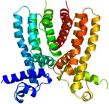(Press-News.org) Johns Hopkins scientists have developed a reliable method to turn the clock back on blood cells, restoring them to a primitive stem cell state from which they can then develop into any other type of cell in the body.
The work, described in the Aug. 8 issue of the journal Public Library of Science (PLoS), is "Chapter Two" in an ongoing effort to efficiently and consistently convert adult blood cells into stem cells that are highly qualified for clinical and research use in place of human embryonic stem cells, says Elias Zambidis, M.D., Ph.D., assistant professor of oncology and pediatrics at the Johns Hopkins Institute for Cell Engineering and the Kimmel Cancer Center.
"Taking a cell from an adult and converting it all the way back to the way it was when that person was a 6-day-old embryo creates a completely new biology toward our understanding of how cells age and what happens when things go wrong, as in cancer development," Zambidis says.
"Chapter One," Zambidis says, was work described last spring in PLoS One in which Zambidis and colleagues recounted the use of this successful method of safely transforming adult blood cells into heart cells. In the latest experiments, he and his colleagues now describe methods for coaxing adult blood cells to become so-called induced-pluripotent stem cells (iPS) --- adult cells reprogrammed to an embryonic like state, and with unprecedented efficiencies.
Zambidis says his team has managed to develop a "super efficient, virus-free" way to make iPS cells, overcoming a persistent difficulty for scientists working with these cells in the laboratory. Generally, out of hundreds of blood cells, only one or two might turn into iPS cells. Using Zambidis' method, 50 to 60 percent of blood cells were engineered into iPS cells.
Zambidis' team also found a way around the use of viruses to convert the cells to a stem cell state. Traditionally, scientists use viruses to deliver a package of genes to cells to turn on processes that convert the cells from one type (such as skin or blood) back to stem cell states. However, viruses used in this way can mutate genes and initiate cancers in newly transformed cells. To insert the genes without using a virus, Zambidis' team uses plasmids, rings of DNA that replicate briefly inside cells and then degrade. The blood cells were also given an additional new step in which they were stimulated with their natural bone-marrow environment.
For the new study, the Johns Hopkins team took cord blood cells, treated them with growth factors, and used plasmids to transfer four genes into them. They then delivered an electrical pulse to the cells, making tiny holes in the surface through which the plasmids could slip inside. Once inside, the plasmids triggered the cells to revert to a more primitive cell state. The scientific team next grew some of the treated cells in a dish alone, and some together with irradiated bone-marrow cells.
When scientists compared the cells grown using the blood cell method with iPS cells grown from hair cells and from skin cells, they found that the most superior iPS cells came from blood stem cells treated with just four genes and cultured with the bone marrow cells. These cells converted to a primitive stem cell state within seven to 14 days. Their techniques also were successful in experiments with blood cells from adult bone marrow and from circulating blood.
In ongoing studies, Zambidis and colleagues are testing the quality of the newly formed iPS cells and their ability to convert to other cell types, as compared with iPS cells made by other methods.
Efficient methods to produce virus-free iPS cells may speed research to develop stem cell therapies, using nearly all cell types, and may provide a more accurate picture of cell development and biology.
###The study's co-authors were Tea Soon Park, Jeffrey S. Huo, Ann Peters, C. Conover Talbot Jr., Karan Verma, Ludovic Zimmerlin, and Ian M. Kaplan. The work was supported by grants from the National Heart, Lung, and Blood Institute, (1U01HL099775 and U01HL100397), the National Cancer Institute (CA60441), both part of the National Institutes of Health, and the Maryland Stem Cell Research Fund (2011-MSCRF II-0008-00 and 2007-MSCRF II-0379-00).
Links:
The Zambidis Laboratory at Johns Hopkins
http://www.hematopoiesis.org/Zambidis/Home.html
Public Library of Science
http://www.plos.org/
Johns Hopkins researchers return blood cells to stem cell state
2012-08-22
ELSE PRESS RELEASES FROM THIS DATE:
Typical IBD patients not represented in research studies
2012-08-22
Major randomized controlled trials of new therapies for inflammatory bowel disease (IBD) are conducted on patients who are not typical of those who physicians see in day-to-day practice, according to a new study in Clinical Gastroenterology and Hepatology, the official clinical practice journal of the American Gastroenterological Association (AGA).
The two major, often debilitating, illnesses that are recognized as IBD are ulcerative colitis and Crohn's disease. The introduction of biologics — the most prescribed medications for IBD patients — have dramatically impacted ...
Deadly outbreak of West Nile virus highlights urgent need for more research, funding
2012-08-22
New Rochelle, NY, August 22, 2012–Mosquito-borne West Nile virus (WNV) caused 26 deaths already this year, and nearly 700 cases had been reported by mid-August according to the Centers for Disease Control and Prevention (CDC). WNV had become "old news" among the public and the media. Furthermore, funding to support research, training and education, and surveillance and vector control had waned. Now there is an urgent imperative to redouble our efforts to understand and control this dangerous virus. Vector-Borne and Zoonotic Diseases, a major peer-reviewed journal from Mary ...
In Fiji, marine protection gets local boost
2012-08-22
NEW YORK (August 20, 2012)—A new study by researchers from the Global Change Institute at the University of Queensland, the ARC Centre of Excellence for Coral Reef Studies at James Cook University, and the Wildlife Conservation Society has found that locally managed marine protected areas within Fiji are playing an increasingly important role in the nation's strategy to protect inshore habitats.
The study estimates that by 2020, locally managed marine protected areas within the Fiji Locally Managed Marine Area (LMMA) network will effectively protect between 12-18 percent ...
Better monitoring of food quantity makes self-control easier
2012-08-22
MINNEAPOLIS / ST. PAUL (08/22/2012) —New research from the University of Minnesota's Carlson School of Management suggests learning how to stop enjoying unhealthy food sooner may play a pivotal role in combating America's obesity problem. The research, published in the Journal of Consumer Research, explores how satiation, defined as the drop in liking during repeated consumption, can be a positive mechanism when it lowers the desire for unhealthy foods.
"When people talk about self-control, they really imply that self-control is willpower and that some people have it ...
Iowa State, Ames Lab researchers study the structure of drug resistance in tuberculosis
2012-08-22
AMES, Iowa – Edward Yu took note of the facts – nearly 2 million deaths each year, 9 million infected each year, developments of multidrug-resistant, extensively drug-resistant and now totally drug-resistant strains – and decided to shift his research focus to tuberculosis.
Yu, an Iowa State University and Ames Laboratory researcher, has described in the journal Nature the three-part structure that allows E. coli bacteria to pump out toxins and resist antibiotics.
And now, in a paper published online by the journal Nucleic Acids Research, a research team led by Yu describes ...
30 minutes of daily exercise does the trick
2012-08-22
Researchers at the University of Copenhagen have shown that 30 minutes of daily training provide an equally effective loss of weight and body mass as 60 minutes. Their results have just been published in the American Journal of Physiology.
Forty percent of Danish men are moderately overweight. For thirteen weeks, a research team at the Faculty of Medical and Health Sciences followed 60 heavy – but healthy – Danish men in their efforts to get into better shape. Half of the men were set to exercise for an hour a day, wearing a heart-rate monitor and calorie counter, while ...
Income, 'screen time' affect soda, junk food consumption
2012-08-22
(Edmonton) Preschoolers from low-income neighbourhoods and kids who spend more than two hours a day in front of a TV or video-game console have at least one thing in common: a thirst for sugary soda and juice, according to research from the University of Alberta.
Researchers from the faculties of Physical Education and Recreation, School of Public Health and Medicine & Dentistry surveyed parents to assess the dietary habits of 1,800 preschoolers in the Edmonton region as part of a larger study on diet, physical activity and obesity.
Researchers found that 54.5 per cent ...
Likely voters say president's 'first 100 days in office' should include plans for research
2012-08-22
WASHINGTON—August 22, 2012— On the eve of the political conventions, nearly two-thirds of likely voters say the next president should announce initiatives promoting medical progress during his "first 100 days in office," according to a new national public opinion poll commissioned by Research!America. And nearly three-quarters of those polled say it's important for candidates for the presidency and Congress to have a science advisor. The findings reveal deep concerns among voters about the lack of attention candidates and elected officials have assigned to research.
"Research ...
Ames Laboratory scientists crack long-standing chemistry mystery
2012-08-22
A team of researchers at the U.S. Department of Energy's (DOE's) Ames Laboratory has answered a key question concerning the widely-used Fenton reaction – important in wastewater treatment to destroy hazardous organic chemicals and decontaminate bacterial pathogens and in industrial chemical production. The naturally occurring reaction was first discovered in 1894 by H.J.H. Fenton, a British chemist at Cambridge, and involves hydrogen peroxide (H2O2) and iron.
How the Fenton reaction actually happens has remained in contention. Scientists have long debated whether it ...
Ancient fossils reveal how the mollusc got its teeth
2012-08-22
TORONTO, ON – The radula sounds like something from a horror movie – a conveyor belt lined with hundreds of rows of interlocking teeth. In fact, radulas are found in the mouths of most molluscs, from the giant squid to the garden snail. Now, a "prototype" radula found in 500-million-year-old fossils studied by University of Toronto graduate student Martin Smith, shows that the earliest radula was not a flesh-rasping terror, but a tool for humbly scooping food from the muddy sea floor.
The Cambrian animals Odontogriphus and Wiwaxia might not have been much to look at ...




